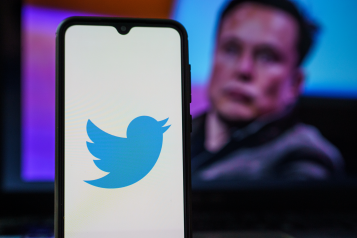Suzanne DeWitt is the founder and managing partner of DEWITT PLLC. With over 21 years of experience in international tax and private wealth planning, she is an expert in the areas of global tax minimization and cross-border wealth planning and implementation. Her work includes the structuring, formation, and operation, on a cross-border basis, of a variety of alternative investment products, including U.S. and non-U.S. hedge funds, private equity funds, hybrid funds, and funds-of-funds, as well as private banking and international tax and trust planning for very high net worth clients and financial institutions.

Photo Credit: Edward Leal
Suzanne recently spoke to Haute Lawyer about common questions and misconceptions regarding NFTs.
Haute Lawyer: What is a Non-fungible Token?
Suzanne DeWitt: To understand what a Non-fungible Token (or “NFT”) is, it is probably easier to first understand what a “Fungible Token” is. For example, a bitcoin is fungible — trade one for another bitcoin, and you’ll have exactly the same thing. Now, let’s make it even easier and think of it in terms of actual money: a $100 bill can be swapped for five $20 bills and still hold the same value, which means a $100 bill is a fungible token. Now, if this $100 bill is signed, by say, Vincent Van Gogh (bear with me here….) – it becomes a totally unique product – a so-called “non-fungible token,” meaning its value is then much harder to determine (and presumably higher), as it’s no longer simply worth five $20 bills. If you traded the Van Gogh-signed $100 bill for another $100 bill, you’d just be left with $100, which is obviously something completely different and of considerably less value. At a very high level, most NFTs are part of the Ethereum blockchain. Ethereum is a cryptocurrency, like bitcoin, but its blockchain also supports these NFTs, which store extra information that makes them work differently, from say, an ETH coin.
HL: What makes NFts attractive for the consumer/creator?
SDW: I think the better question is – “What’s the point of NFTs??” The attractiveness of an NFT depends on whether you are a buyer or an artist.
For artists, NFTs are interesting because it gives them a way to sell work for which there might not be much of a market otherwise. Artists can come up with a really cool digital sticker idea and actually sell it for a lot of money (like, what else could they do with it – sell it for $1.99 in the App Store??). Also, NFTs have a feature which an artist can enable that will pay that artist a percentage every time the NFT is sold or changes hands. Unlike a typical, old-fashioned old painting (where, historically, it would never really appreciate in value until after the artist ‘s life), an artist’s NFT has the potential (during their lifetime!), to become super popular and balloon in value, and that artist will see some of that benefit.
For consumers, one of the obvious benefits of buying art is it lets you financially support artists that you like in the NFT space (which is way trendier than, say, animated stickers). Buyers of NFTs also get bragging rights, like being able to post the image online or set it as their profile picture, with a blockchain entry to back it up. No matter what, buying an NFT always comes with the potential benefit of actually going up in value, so you may eventually even be able sell it for a considerable profit.
HL: What are the main things to know before investing in an NFT?
SDW: Ever heard of the Bored Ape Yacht Club? What about a Crypto bro? Okay, you don’t have to answer that. The most important thing to know before diving into the NFT market is to do your research. It’s no different than doing research on a stock or bond to know what you are getting yourself into. One of the first things you’ll learn is that an NFT is not like a stock or a bond where you know what the intrinsic value of that investment is. NFTs have a market value that’s driven by what the crypto “community” is willing to pay for them. The traditional principle of investing, buy low and sell high, can also be applied for NFTs. Those “in the know” are either buying NFTs that they can flip right away, or buying NFTs to hold. The risk, however, is getting caught up in a craze (which always works well for sellers but not so much for buyers), while completely unaware that NFT investments are pure speculation, and you’re left with an NFT that is basically now worth zero. The take-away point is to think about NFTs as a commodity-like asset similar to silver, gold and (traditional) art.
HL: Are NFTs here to stay?
SDW: In the last year, NFT talk has literally broken the internet (Queue mic drop…)


















